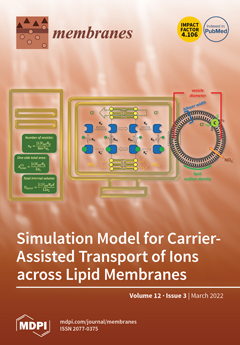Oilfield produced water (OPW) has become a primary environmental concern due to the high concentration of dissolved organic pollutants that lead to bioaccumulation with high toxicity, resistance to biodegradation, carcinogenicity, and the inhibition of reproduction, endocrine, and non-endocrine systems in aquatic biota. Photodegradation
[...] Read more.
Oilfield produced water (OPW) has become a primary environmental concern due to the high concentration of dissolved organic pollutants that lead to bioaccumulation with high toxicity, resistance to biodegradation, carcinogenicity, and the inhibition of reproduction, endocrine, and non-endocrine systems in aquatic biota. Photodegradation using photocatalysts has been considered as a promising technology to sustainably resolve OPW pollutants due to its benefits, including not requiring additional chemicals and producing a harmless compound as the result of pollutant photodegradation. Currently, titanium dioxide (TiO
2) has gained great attention as a promising photocatalyst due to its beneficial properties among the other photocatalysts, such as excellent optical and electronic properties, high chemical stability, low cost, non-toxicity, and eco-friendliness. However, the photoactivity of TiO
2 is still inhibited because it has a wide band gap and a low quantum field. Hence, the modification approaches for TiO
2 can improve its properties in terms of the photocatalytic ability, which would likely boost the charge carrier transfer, prevent the recombination of electrons and holes, and enhance the visible light response. In this review, we provide an overview of several routes for modifying TiO
2. The as-improved photocatalytic performance of the modified TiO
2 with regard to OPW treatment is reviewed. The stability of modified TiO
2 was also studied. The future perspective and challenges in developing the modification of TiO
2-based photocatalysts are explained.
Full article






